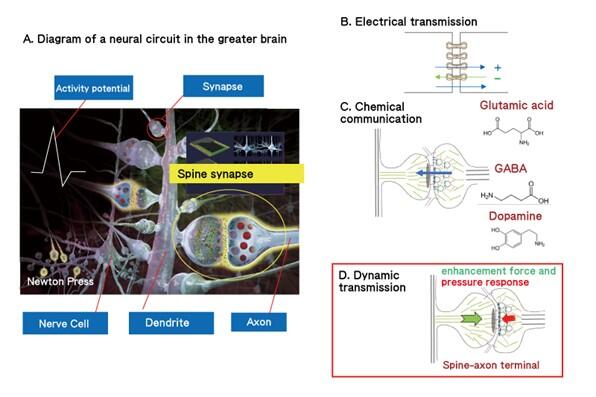An individual's brain is home to approximately 100 billion nerve cells, known as neurons, which form a neural network. Previous studies have shown that these nerve cells can transmit information using electrical and chemical substances to each other via synapses between axons and dendrites, enabling memory and learning. As the third mode of information transmission used by these synapses, Professor Haruo Kasai of the Graduate School of Medicine at the University of Tokyo and others have discovered a mechanical transmission method that involves the increase and pressure sensation of spines existing on the dendrites of nerve cells.
To identify the motility of synapses, the researchers developed a new two-photon uncaging method that can release glutamate at one three-dimensional point. By combining this with optical stimulation/measurement technologies, they investigated the effect of increasing a single spine on the neuronal surface. It was found that within the synapse, the spine pushed the axon with a force equivalent to the tension of a muscle of 0.5 kg/cm2, and the axon sensed the pressure and responded functionally. This force could be used to quickly read spine changes and use them for short-term memory retention. This result is the first in the world to show that peripheral nerves and central nerves have sensory receptor functions at the ends of axons. Since many molecules related to psychiatric disorders are concentrated in spines and synapses, as research progresses, there are high expectations for new findings that may improve diagnosis and treatment.

(B) Synapses also carry out transmission by electrical binding, but (C) most of the transmission is chemical transmission that releases chemical mediators (glutamic acid, GABA, dopamine).
(D) In addition, in this study, a third mode of transmission, namely mechanical transmission, was revealed.The increasing motion of the spine is conveyed to the end of the axis, causing a functional change.




